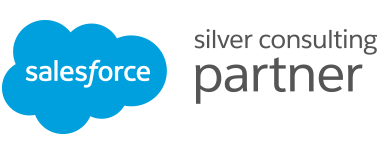So you’ve identified your opportunities for going digital and you’ve benchmarked your digital maturity against competitors. Now what?
In order to get the most out of the tech solutions they wish to implement, companies must eventually align their digital objectives with their overall strategy. To accommodate any future evolution in these digital systems, firms should ensure that they undertake any structural shifts necessary to guide their decision-making process.
Structural Shifts are Necessary to Adapt to a Long-Term Plan
BECOME AGILE THROUGH ORGANIZATIONAL REINVENTION THAT WILL GIVE YOU A LONG-TERM COMPETITIVE EDGE
Rising expectations in terms of customer engagement is putting increasing demands on companies, both B2B and B2C, to deliver relevant solutions and offer personalized interactions. Today, pleasant interfaces are just as important as convenient ones. The good news is that digital is instrumental in understanding how your customers behave and think, and can go far in predicting their future actions.
- How can you use your current channels to radically improve customer-company interaction?
- Do your customers like to view their portfolio and make investment decisions via a mobile app?
- Are potential clients more likely to go for a nearby bank branch or a bank with a strong online (including social media) presence?
- Can you offer unique combinations of products and accompanying customer experiences that will foster loyalty and improve customer retention?
Determine your objectives in increasing customer engagement before you look for suitable digital solutions. If you are unsure how digital can reinvent your relationship with the customer, engage with third-party experts who can help you understand what different tools can do for your business activity.
Financial institutions are already shifting their business model from being product- or company-based to one that places the customer at the heart of its strategy. The original sales funnel mechanism has changed, from a traditional linear model to a multi-touch point customer journey. Combining process automation (for instance loan approvals, advice, or investment guidance) with data analytics in an intuitive interface reduces costs as clients become more self-reliant and require less in-branch services. A happy customer is a returning customer. Banks and asset management firms can ensure seamless customer journeys by using CRM systems and integrated mobile, website, and email platforms.
DEPLOY CUSTOMER-CENTRIC SOLUTIONS THAT HELP YOU UNDERSTAND CLIENT BEHAVIOUR, AND REACT TO IT
Simplifying processes is just the first step on the road to agility. Banks and other financial firms typically still use operating systems that are long outdated. In many ways, the mindset adopted to transform the IT systems of a bank or private equity firm must reach far beyond digital. Department leaders and the C-suite will need to ensure that:
- Their products and services closely follow evolving customer preferences;
- Their employees understand and embrace the new company culture and are properly equipped (skills and resources) to channel your firm’s new vision;
- Their decision-making and internal budget strategies support the entire digital transformation process.
The broad range of financial actors means that there is no one-size-fits-all approach to defining the business model of the future, but the powerful range of tools currently available on the market are suitable for a wide range of firms. Managers who will see a meaningful and sustainable difference will be those who, for example, adopt Cloud-based services, use DevOps to identify more efficient end-to-end processes, explore mobile opportunities, and get acquainted with Application Programming Interfaces. Ultimately, this will require firms to seek third-party partnerships for the right expertise and support.
DETERMINE THE RIGHT ROLL-OUT PROGRAMME FOR YOUR FIRM
Is your firm’s current approach more Fast and Furious or Driving Miss Daisy? While some business models, notably smaller and medium-sized firms, do well by realizing short-term wins on a project by project basis, the break-through players are those who embrace digital change across their entire organization for a dynamic and long-term transformation.
ADAPT YOUR ROLL-OUT PROGRAMME TO SUITE YOUR FIRM VISION, SIZE, AND RESOURCES
Firms’ approaches will be influenced by work conducted in the previous steps that establish digital maturity and heat map priorities. Initial phases, particularly for smaller firms, can include identifying small objectives that provide quick wins and raise the appetite for digitalization. For example, this could include automating a simple, end-to-end interaction with the client, developing an App to support a product, or having a digital onboarding process. Bigger firms, or smaller firms who have already successfully completed some digital projects, may find that a business model transformation over a three- to five- year period will provide better ROI and a chance to outsprint competitors.
”Don’t forget to establish meaningful KPIs so that progress can be tracked. Use KPIs that complement the heat maps and maturity evaluations conducted in the preparatory phase so you have something to use as a benchmark. This is vital for ensuring long-term progress through review during the execution of your digital plan!
BE FLEXIBLE IN ADMINISTERING THE ROLL-OUT PROGRAMME AT DIFFERENT PHASES OF YOUR DIGITAL JOURNEY
Different phases of the digital journey should also be approached differently. For example, the embryonic stage of your implementation journey should explore different opportunities for transforming or refining existing processes, while at the same time seeding ideas for innovative new projects. It’s a bit ‘all systems go at this stage’, and there are several tactics for driving transformation. One option is to plant expert digital advocates in different teams to lead changes in company culture (alternatively, smaller firms can work closely with representatives from third-party companies). Another option is to appoint a designated digital team, led by a Chief Digital Officer, who take ownership and are accountable for the company-wide projects. As your firm’s journey matures, the horsepower for digital projects can become leaner: centralized within their respective departments and supervised from the management level.
About the Author
Manuela leads the Marketing division at IMS, advising clients on branding and market positioning in both Europe and Asia.
Prior to joining IMS, Manuela worked in financial regulation and compliance. Past experiences include representing France in roundtable discussions in Brussels for the European Venture Capital Fund (EuVECA) Regulation.
She obtained her LL.B (Hons) at UCL before graduating from Sciences-Po, Paris, with a Master’s in Financial Regulation.
Connect with Manuela Burki on LinkedIn











